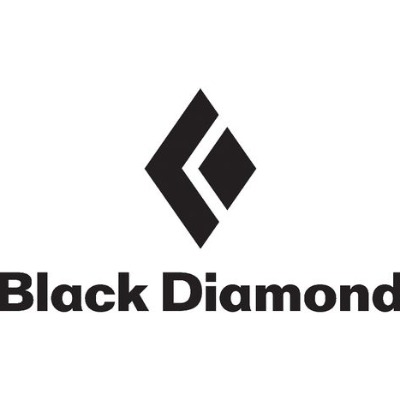Destimetrics - Despite Slower Booking Pace & Price Sensitivity, Western Mountain Destinations Settling More Stable Patterns

Plunging lodging rates in the midst of the pandemic for more than a year were followed by skyrocketing rates as the arrival of vaccines allowed the pent-up demand for destination travel to explode. And now, stability in rates and occupancy seem to be leveling out among participating lodging properties in 17 mountain resorts across seven states. The data that includes approximately 28,000 lodging units, was released yesterday by DestiMetrics,* the Business Intelligence division of Inntopia, in their monthly Market Briefing. The latest report revealed that even though a slight uptick in rates last month led to a modest dip in occupancy, the overall summer is looking very strong and properties are now operating on a far more even keel than they have for more than four years.
July occupancy up; rates almost flat
As rates stabilized, July recorded a 4.9 percent increase in occupancy compared to last July while the Average Daily Rate (ADR) eked out an 0.8 percent increase in a year-over-year comparison to last year. The increased visitation led to a 5.7 percent increase in aggregated revenues for the month.
Summer rates keep edging up
Stitching together the actual occupancy results from May through July with on-the-books reservations for August through October, the season is currently posting a 3.8 percent increase for this summer compared to last year at this time. Daily rates are up a slight 2.6 percent—a bit more than June--with gains in all six summer months. That combination is delivering a comfortable 6.5 percent increase in revenues compared to last summer. However, that modest uptick in rate strength put a damper on bookings and lowered the booking pace 8.1 percent in July compared to last year.
“There are two somewhat contradictory narratives in the data this month,” explained Tom Foley, senior vice president for Business Intelligence at Inntopia. Price-sensitive consumers pulled back from bookings as the rates ticked up—but the changes were moderate as the wild swings we’ve encountered in the past three years are now behind us and overall conditions continue to be favorable,” he continued.
Foley went on to clarify the situation by saying that “this fairly recent stabilization and equilibrium in the mountain lodging industry is allowing for greater flexibility for lodging properties. Fully aware of the rate sensitivity, property managers needing to boost occupancy can tweak rates to offer more attractive pricing,” he continued. “We haven’t seen two consecutive months with this level of stability since the end of the 2021-2022 ski season, let alone for the full six months we’re seeing now--and it certainly appears to be good for both consumers and lodging properties.”
First Look at Early Winter
As of July 31, data is available for the first three months of the winter season—November through January. Occupancy is down 13.6 percent for those first three months with declines in all three compared to last year at this time. Daily rates are up 6.9 percent with increases in all months. As price sensitivity extends into the winter season, the currently strong daily rates are driving the notable declines in occupancy--which are not sufficient to offset those rate gains. As a result, lodging properties are reporting an aggregated 7.6 percent decline in revenue for the early ski season.
Economic indicators
As always, various market indicators along with consumer sentiment continue to impact purchasing decisions, including destination travel.
-The National Inflation Rate which measures consumer prices year-over-year, declined from three percent to 2.9 percent in July—the first time it has been below three percent since March 2021. And while month-over-month prices ticked up a scant 0.2 percent from June, that increase was expected. For the travel industry, declines in both gasoline and airfares compared to last month and last year at this time, can help support tourism.
-The Dow Jones Industrial Average rose a strong 4.4 percent during July with the first-ever monthly close over 40,000 points.
-The Consumer Confidence Index (CCI) edged up a slight 2.6 percent during July and at 100.3 points is still below its 24-month average of 104.4 points. Going the opposite direction, the University of Michigan’s Consumer Sentiment Index (CSI) moved down to just 66.4 points and its lowest level since last November and is statistically flat to its 24-month average of 66.6 points.
-The National Unemployment Rate ticked up to 4.3 percent during July to reach its highest level since October 2021. Combined with the tepid 114,000 new jobs added to payrolls during the month, July posted the weakest job growth since December 2020 and changed the tone of the economic outlook.
Notable items in July data
- Year-over-year room rates rose slightly in July from June, triggering a broad softening in bookings for the upcoming six months. Despite the dip, summer occupancy this year is stronger than last summer with solid seasonal revenues.
- Summer occupancy slipped slightly during July, moving from a five percent increase as of June 30 to a 3.8 percent increase as of July 31. August registered the largest downshift in the wake of rising rates, drifting from an 8.2 percent gain in occupancy as of June 30 down to a four percent gain of July 31.
- Booking pace during July for arrivals from July through January were down 8.2 percent in a year-over-year comparison and is the first decline since last March and the steepest drop since last January. Despite the softening occupancy, as of July 31 there is $482.6 million in actual or on-the-books revenue for Summer 2024 which is $28.5 million more than last year at this time
“At summer’s halfway point, we are seeing the most stable booking conditions since the pre-inflation, pent-up demand period in early 2022,” reported Foley. “Occupancy and rates are up in all six months, although not dramatically, providing lodging properties with healthy revenues for the season,” he added. “Still, rate sensitivity very much remains an issue for consumers as we saw in the pullback in bookings during July. The coming months will likely be influenced by economic variables such as the new inflation data, interest rates, consumer mood, and potentially, the risk of wildfires in certain regions.













